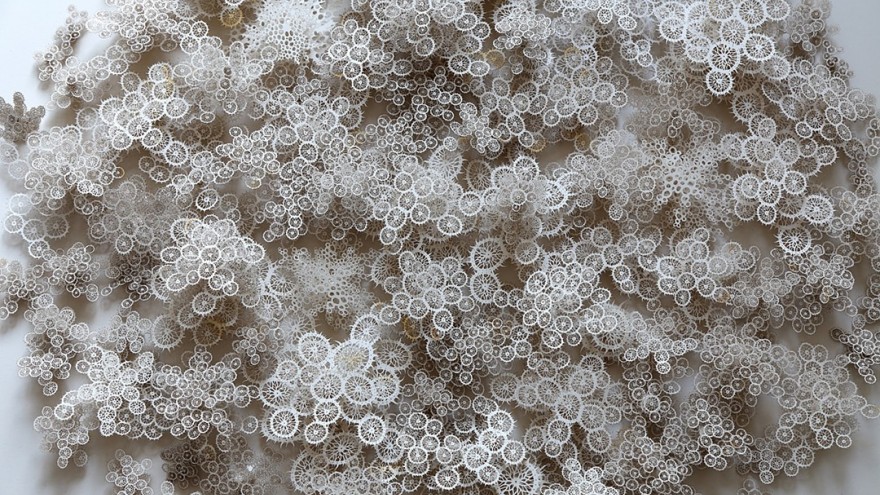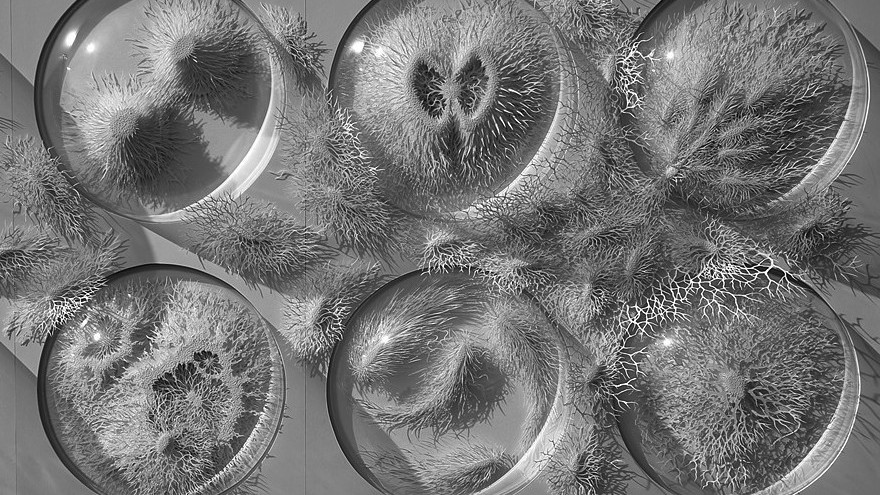Anglo-Irish artist Rogan Brown explores the unseen “architecture of nature” in his paper art, which visualises different types of microorganisms from cell structures and bacteria to moss and coral. With his intricate paper sculptures, Brown examines our relationship with the environment, using the miniature designs to highlight the complexity of life and the connection between all living things.
His Outbreak series examines the peculiar shapes and construction of human microbes and pathogens. Made up of stacks of finely cut white paper, each piece is a scientifically accurate reproduction of a real-life microscopic organism, displayed in a petri dish.
By taking a closer look at microorganisms that occur naturally in nature, Brown says he has “developed a formal, aesthetic vocabulary,” which he uses “to construct hybrid sculptural forms, half real, half surreal.”
The recurrent theme that underscores his work explores how science sometimes has no explanation when confronted with nature’s vast scale and intricacies. “Science's goal of containing and defining nature is constantly subverted and fractured by the sheer volume and variety of data that needs to be observed, analysed and classified,” says Brown.
One of Brown’s most recent projects, Cut Microbe uncovers the depths of the human biome by exploring the colony of bacteria that lives in and on our bodies.










